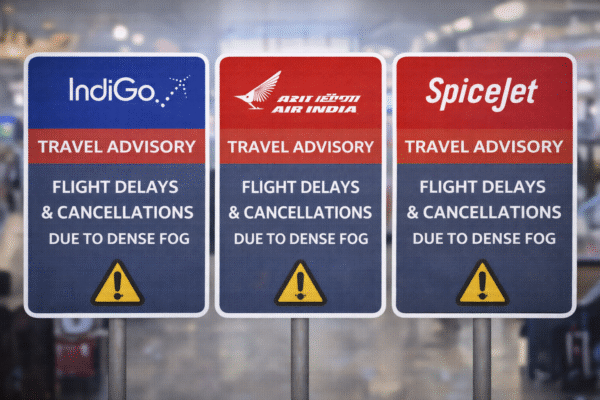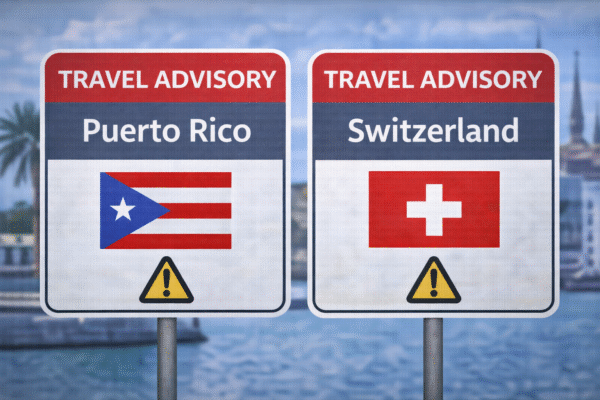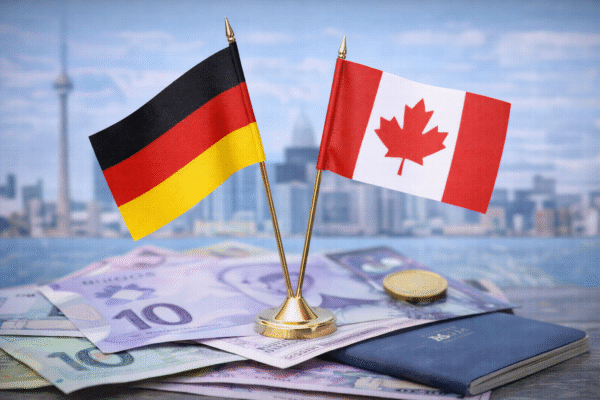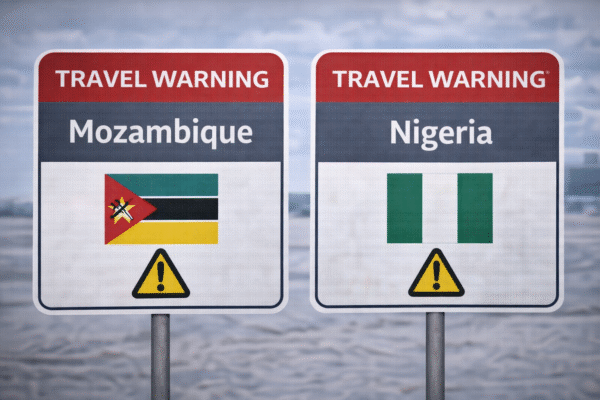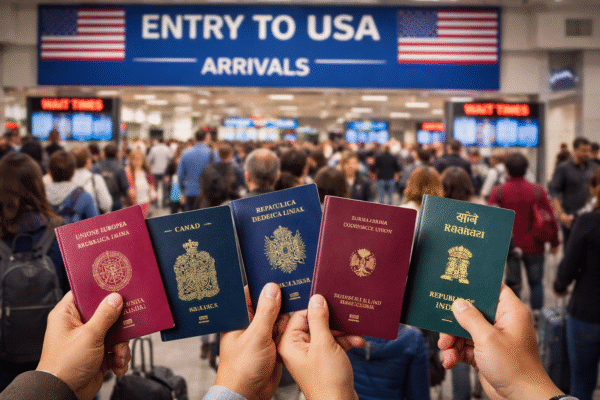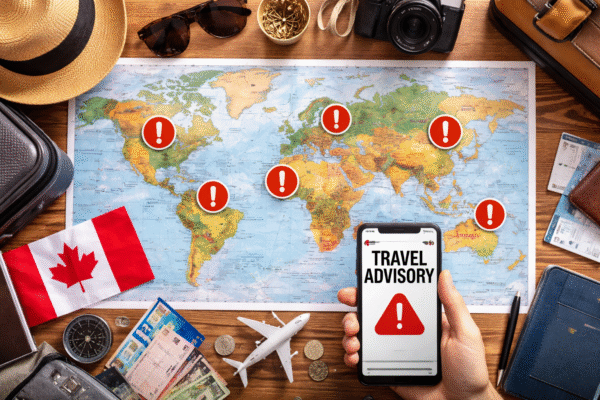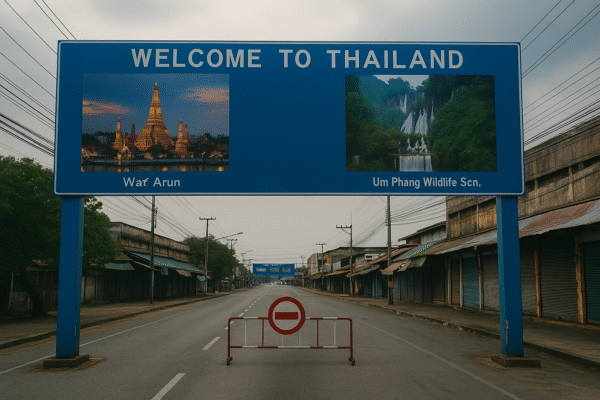Thailand’s eastern and northeastern provinces are grappling with an unprecedented tourism crisis, as rising tensions with neighboring Cambodia spark widespread booking cancellations and business shutdowns. The escalating conflict, which intensified in early May, has devastated the travel sector across border regions, with popular areas like Sa Kaeo, Chanthaburi, and Trat experiencing up to 100% cancellation rates.
According to recent data from the Tourism Authority of Thailand (TAT), gathered between July 25–28, booking rates in many provinces have either plummeted or ceased entirely, resulting in massive financial losses for local tourism operators. This alarming downturn threatens to push the region’s travel economy to the point of collapse, particularly in communities dependent on cross-border visitors.
Sa Kaeo and Eastern Provinces Hit with Full Shutdowns
Sa Kaeo province, which borders Cambodia and houses the busy Aranyaprathet crossing, has witnessed a complete collapse in hotel bookings. The Aranyaprathet district, once a bustling gateway for tourists and traders, now stands deserted. As per TAT reports, 100% of bookings in border areas have been canceled, while the province’s inland areas report an 80% cancellation rate.
In Chanthaburi, an equally popular eastern province known for its gemstone markets and coastal charm, local tourism businesses report losses of up to 80%. The situation is even more dire in Trat province, where entire stretches of border tourism infrastructure have shut down due to a full-scale drop in arrivals.
Island Destinations Also Impacted
While the islands off Trat’s coast typically remain insulated from land-border conflict, this crisis has reached even the usually unaffected resort destinations. Ko Chang, a favorite among both domestic and international travelers, has suffered a 10–30% cancellation rate. Ko Mak has seen a 20–30% drop in bookings, and Ko Kood is bearing the brunt, with cancellations reaching 50–60%, affecting hotels, resorts, and transportation providers.
Northeastern Provinces Face Tour Group Collapse
In Thailand’s northeastern region, the impact is similarly severe. Ubon Ratchathani, a province that frequently hosts large domestic and international tour groups, has recorded a total cancellation of all group accommodations. While the province maintains a 70% occupancy rate, this is largely due to media personnel and donors operating in the area.
Surin province has experienced an 80% reduction in tour group bookings and postponed major events like its high-profile Enduro motorcycle racing championship. Nevertheless, occupancy remains at 50%, again propped up by relief efforts and press coverage.
Sisaket province, which directly borders Cambodia, has reported a complete halt in all tour group activity. Meanwhile, Buriram, though not a direct border province, has recorded a 70% drop in bookings, with key tourism hubs like the Chang International Circuit postponing all scheduled events. The nearby Phanom Rung Historical Park, a UNESCO Tentative List site, has also temporarily closed, reflecting the widespread fear and instability.
TAT and Government Advisory in Full Force
The Thai government, through the Tourism Authority of Thailand, has issued official travel warnings advising tourists to avoid high-risk areas along the border. Provinces flagged include Ubon Ratchathani, Surin, Sa Kaeo, Chanthaburi, and Trat. The TAT has emphasized that visitor safety is the top priority and has suspended active promotion of travel to these provinces until the situation stabilizes.
TAT Governor Thapanee Kiatphaibool confirmed that the agency is closely monitoring developments on a weekly basis. Information is being compiled from provincial offices, national security reports, overseas TAT branches, and real-time media coverage to assess how the conflict is reshaping regional tourism dynamics.
In a press briefing, Thapanee stated:
“The safety of tourists and the stability of our industry are paramount. We are working with local authorities, security agencies, and the private sector to evaluate risks and develop recovery plans.”
Wider Economic Ripples and Recovery Uncertainty
Thailand’s tourism industry contributes nearly 18% to GDP according to World Bank estimates. With border regions serving as major conduits for regional trade and short-haul tourism from Cambodia, Laos, and Vietnam, the ongoing shutdowns threaten not just local livelihoods but broader national targets for tourism recovery post-COVID.
Local operators are calling for swift government assistance, including financial relief packages, domestic stimulus programs, and marketing campaigns aimed at restoring traveler confidence once the conflict subsides. Industry stakeholders are also urging ASEAN diplomatic channels to resolve the cross-border situation peacefully, underscoring tourism as a shared economic pillar for both nations.
Conclusion: Fragile Outlook Amid Rising Tensions
The ongoing border conflict between Thailand and Cambodia has already inflicted a heavy toll on the region’s tourism-dependent communities. With cancellations reaching 100% in some districts and iconic events and attractions shuttered, the situation has become a critical test of the resilience of Thailand’s provincial tourism economy.
Until peace is restored and travel safety can be guaranteed, the once-bustling border towns of Sa Kaeo, Trat, and Surin may remain in limbo — economic engines silenced by the reverberations of regional instability.
For more travel news like this, keep reading Global Travel Wire




